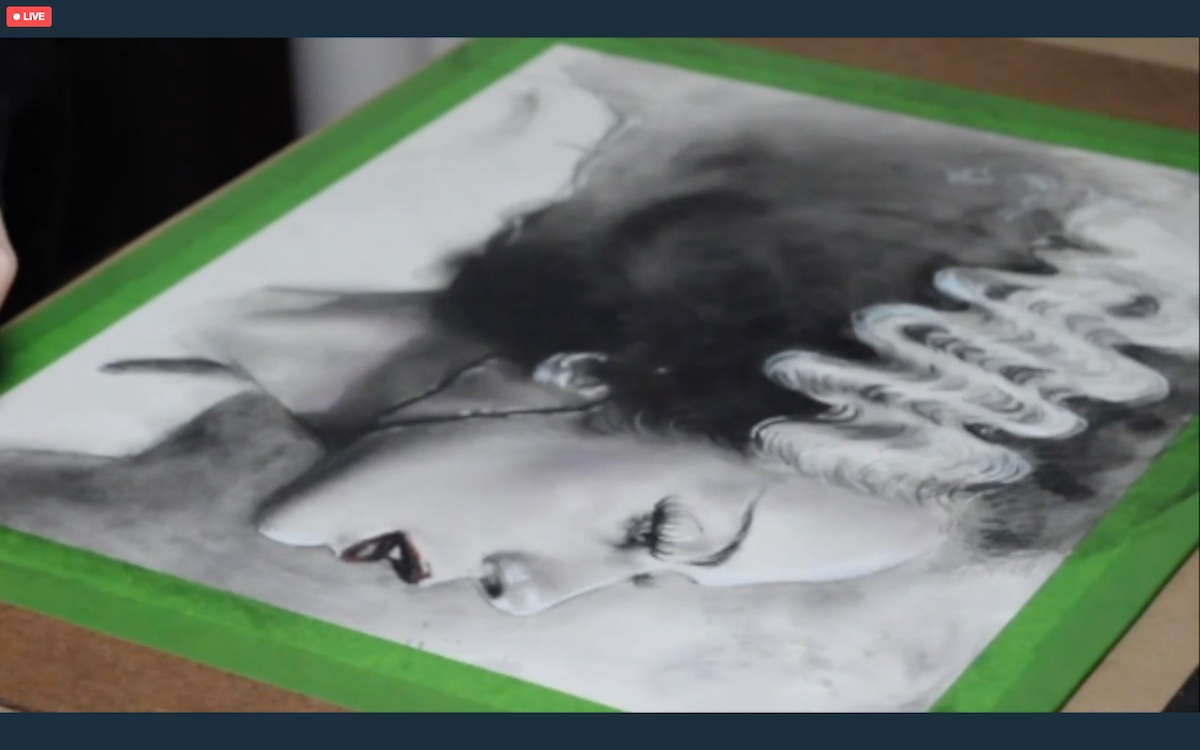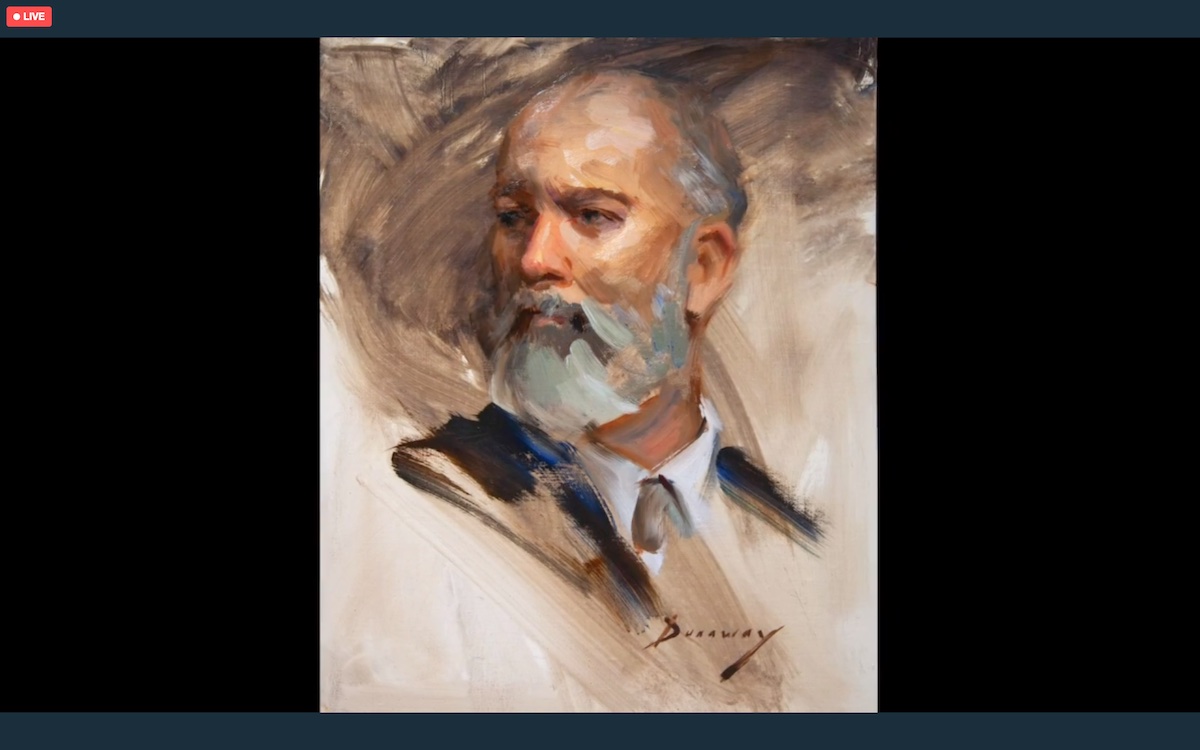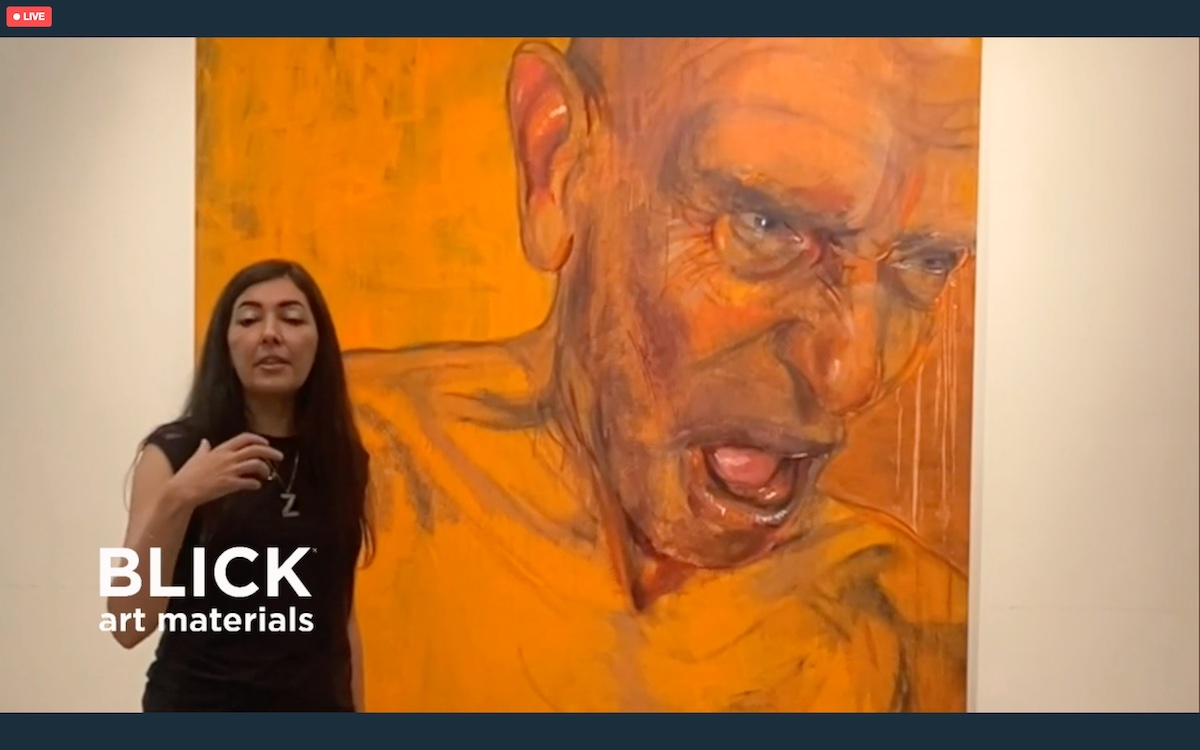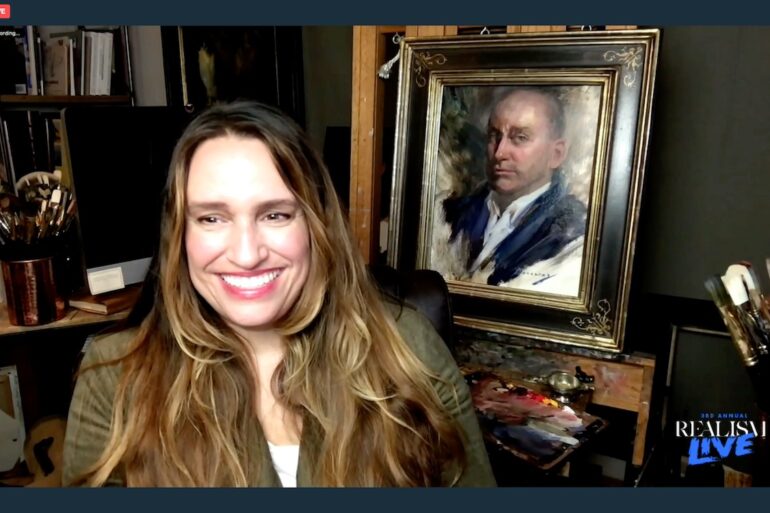
This post is also available in:


It was Eric Rhoads and Peter Trippi who did the honors for the official opening of the third edition of Realism Live, the exclusive event entirely dedicated to contemporary realism.
In addition to engaging an international faculty and audience from 49 states scattered in 20 countries around the world, Realism Live presents a truly unique opportunity to learn from a number of teachers who have shed their teaching shoes to devote themselves exclusively to the arts. Teachers who have returned to teaching at Realism Live by getting involved with the overflowing and passionate enthusiasm of Eric Rhoads, Peter Trippi and the entire, impeccable team at Streamline Publishing.
The third edition of Realism Live started off with a bang compared to the traditional demonstration days. Credit should probably be given to the two demonstration modules proposed by the organization for this edition that garnered the enthusiasm of the audience: in the first, Michelle Dunaway performed a live portrait of Peter Trippi; in the second, Karen Offutt, connected live from the studio in Texas, performed a live portrait throughout the day.
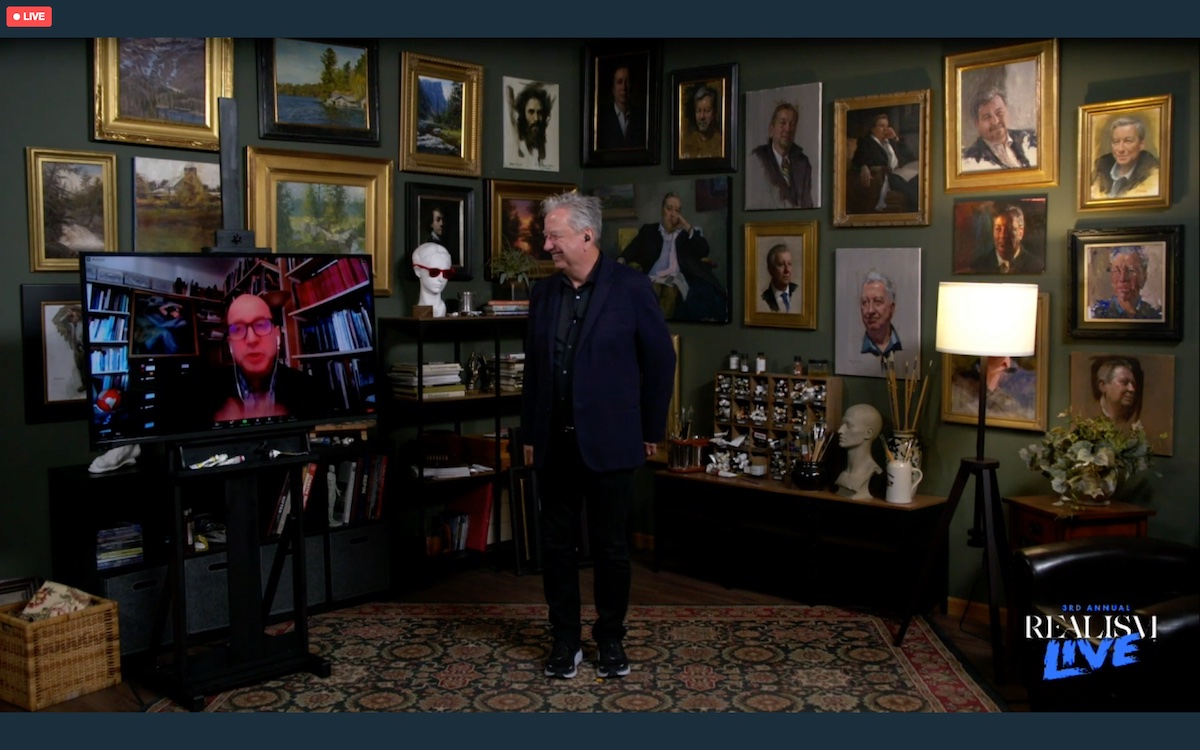
It was Michelle Dunaway who opened the dances. She did so exquisitely and absolutely spontaneously with her beaming smile that entered into a dialogue with her longtime friend, Peter Trippi: editor in chief of Fine Art Connoisser Magazine and above all a calm and veiledly ironic character who accepted with honor to be portrayed by this noteworthy artist.
A celebrated face especially in the environment of the Portrait Society of America of which she is a faculty member, Dunaway, has been the recipient of prestigious awards and honors. She is also known to have been the favorite student of Richard Schmid: the celebrated artist who passed away a couple of years ago and who is credited with helping to popularize Alla Prima painting. Alla Prima painting is an oil painting technique popularized by the Flemish school in the 1400s that involves painting wet on wet. It requires a good deal of dexterity, combined with absolute control of the artist’s tools, who in the compositional process is guided by instinct without ever forgetting the basic rules. A process that can instill fear, especially for those approaching this technique for the first time, but, as Dunaway reiterates it is worth accepting the challenge because, “Perfection is fear based – excellence is faith based” said the artist.
Peter Trippi’s portrait was done in his studio in New York City: an environment with a somewhat complex light to manage, which immediately opened up a reflection about the importance of natural light and the importance of portraying the subject from life, with all the various accouterments that come with it.
What Michelle Dunaway and Peter Trippi have in common, in addition to their eloquence, depth of thought and knowledge of art history, is that they both consider the compositional process as important as the final result, because as Peter Trippi said, “The process is part of the journey”. Indeed, it is during the posing session that the artist captures the essential nuances of the subject. Nuances that represent the very essence of realism, and that based on the representation of the subject and from what is felt at that particular moment, confer an extraordinary intimacy that absolves realism from the sterile definition of being a mere copy of reality. Shades that can also be divergent depending on the level of knowledge of the interlocutors, as Michelle Dunaway herself stated, referring to two of her portraits done by Richard Schmid and Michael Shane Neal, another great figure of note.
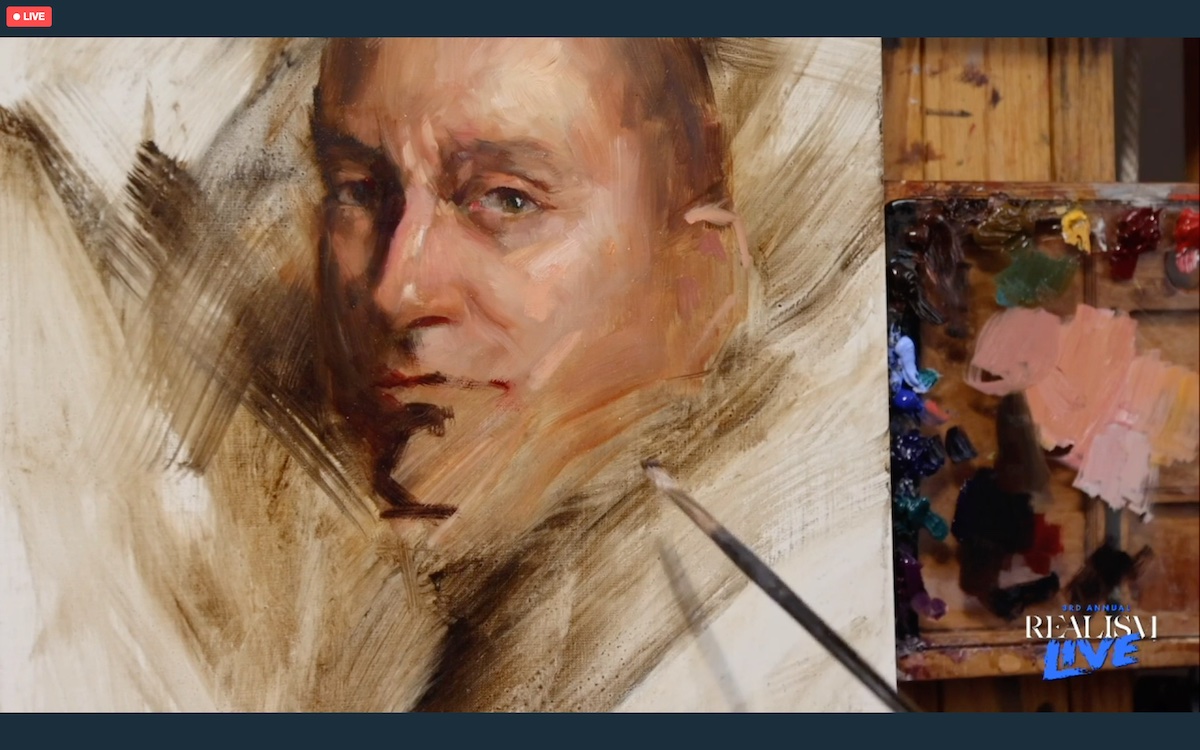
What is striking about Michelle Dunaway, at any rate, is the extraordinary ability to capture the essence of the subject from the first brushstrokes, as demonstrated in both the portrait to Peter Trippi and the one to H.Lyon, executed later in the demonstration session as an art ambassador for Royal Talens.
Dunaway’s compositional process develops from the focal point of the portrait outward. Focal point that does not necessarily enhance the eye itself since Dunaway also finds expression lines or the angle of the eyebrow very interesting. Another peculiarity in Dunaway’s style is the attention to gesture more than to detail, and to the realization of edges, about which she declares:” edges are music in my paintings.” This is a peculiarity she shares with both master Richard Schmid and her favorite painter, John Singer Sargent.
In her compositional evolution and adherence to basic rules, Dunaway has shown how she prefers to let go of the perfection of lines by following the emotion and natural flow of the elements. She does this spontaneously, without letting pressure and fear break her down. An element this of great importance especially for the new generations who feel the burden of performance very much and to whom the artist advised, “You have to look at the subject with “softer eyes”: You have to be comfortable with your painting and be spontaneous like you were a child.”
Moreover, based on personal experience, Dunaway reiterated the importance of studying Old Masters live in museums, “No book, no matter how good, can render the fullness and nuance of the painting seen from life.” According to the artist, copying the greats of the past in museums allows one to understand first and foremost the way they observed nature by poining questions and seeking answers. A factor even more important than the technique itself.
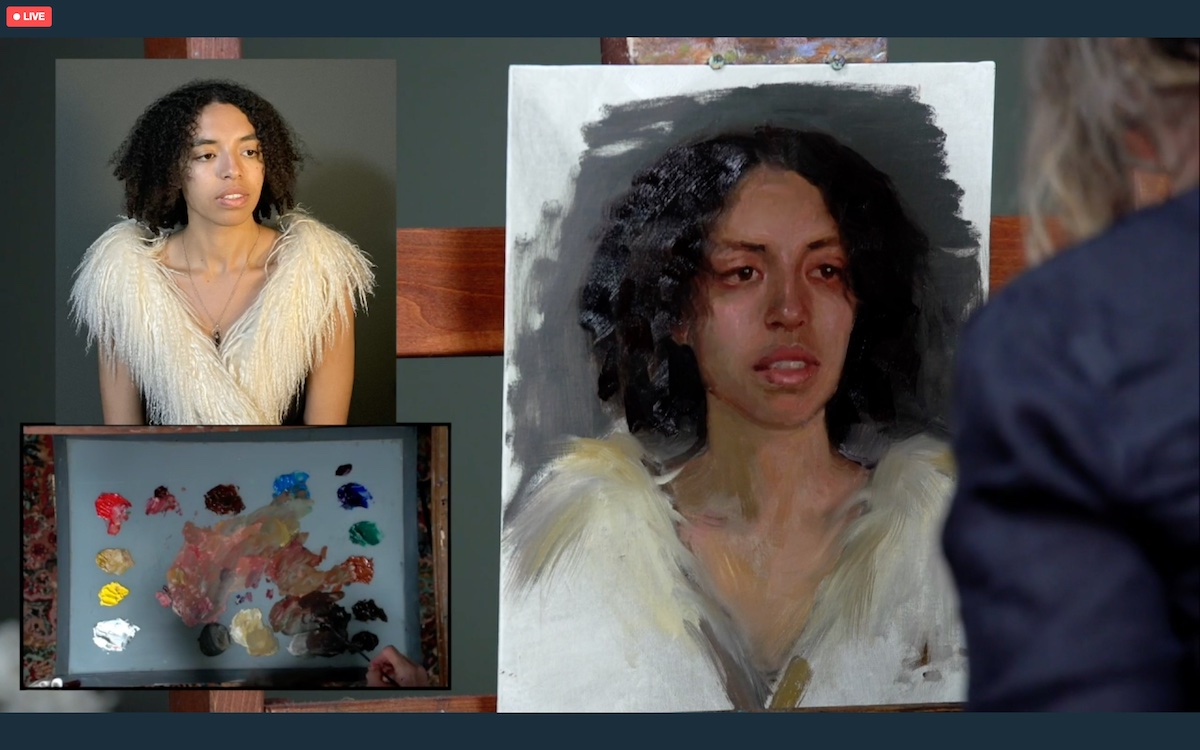
Texas-based artist Karen Offutt created, over the course of the entire day, a portrait in real time, showing the various compositional steps from beginning to end of the process.
A love of fine art and a search for a school that imparted the classical concepts of representational art led Karen Offutt to find her own dimension over time and to found, in collaboration with Jennifer Balkan and Raz Seri, Atelier Dojo in Austin, TX.
Atelier Dojo is based on a rigorous academic program and offers classical training imparted in the style of the French academy and Italian Renaissance ateliers.
In the demonstration session, Offutt, while working on a portrait at the premiere, showed all the steps necessary for the creation of a realistic portrait, starting with the importance of direct observation, the characteristics of which allow one to distinguish the execution of a portrait made from a photographic image from a life-like image, since, “The differences are visible not only in the perception of lights and colors but also in the realization of the edges,” said the artist. Painting from life, in the presence of a model, is crucial for the artist because the lack of time, due to the timing of the posing session, requires finding solutions in the immediate and allows for fixing the necessary information.
After carrying out an initial compositional process by breaking down individual parts into large shapes, she focused on the general idea of light and shadow. “This is a mental process that is not easy to put in place but becomes natural with constant and rigorous practice,” the artist says in this regard. As she proceeded, she later gradually added information by refining details with a smaller brush and soft transactions of tonal and color values.
Observation from life helps in the perception of optical colors, and Offutt showed great respect for the flash tones that she made as faithful as possible to the originals and kept distinct despite the harmonious, multilayered composition that make the image deep and three-dimensional. In addition to the frequent use of the mirror to control the painting, Offutt often referred to what she calls “the anchor shapes,” that is the control of those anatomical references that allow her to continually check the measurements and proportions in the whole.
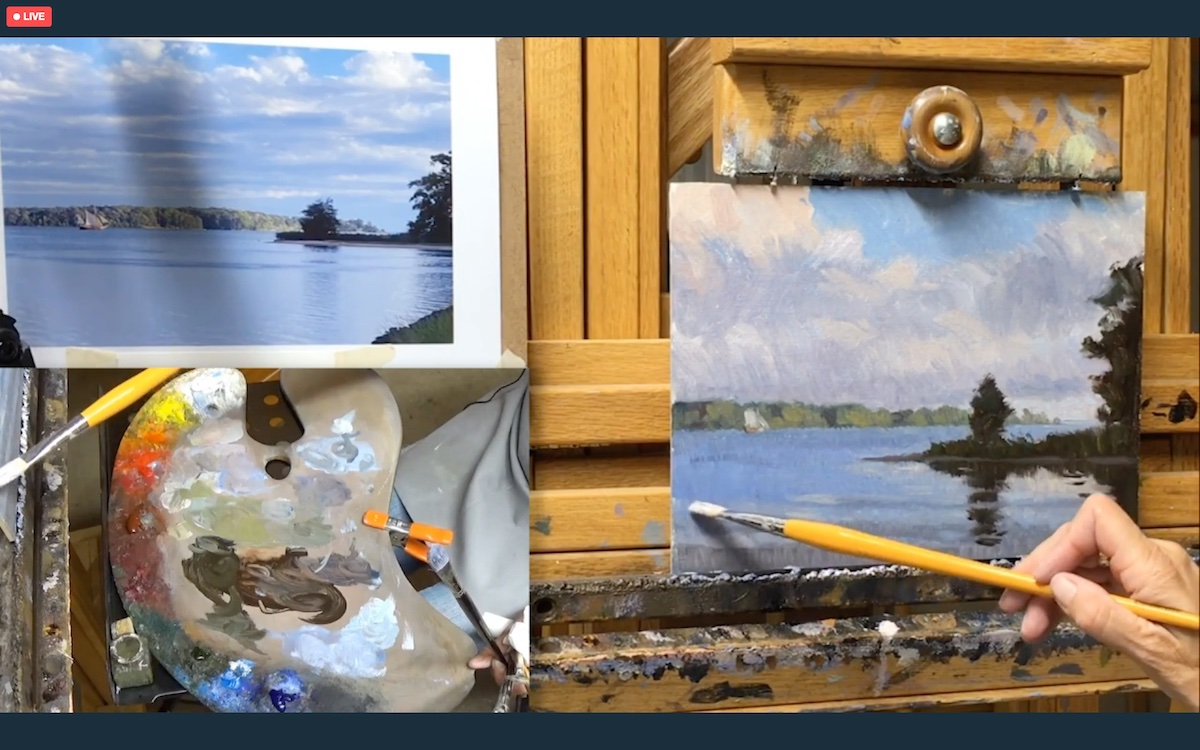
Third-generation professional artist Lisa Egeli has executed a small landscape in oil that she has been able to interpret without slavishly following the photographic reference. This is a quality she has matured over time by observing and contemplating nature to the point of making its laws her own, thus managing to modify landscapes to her own liking.
While being an extraordinary portraitist Lisa Egeli lives in a symbiotic relationship with nature. The reason is to be found in her childhood spent outdoors, which allowed her to refine all her senses and which enable her to convey the different sensations, not necessarily visual, on canvas.
Egeli’s particularly sensitive nature can also be traced to the calmness with which she approaches painting: in order to be able to convey feeling and emotion, the artist in fact needs to be totally in tune with her surroundings, and the small painting executed for the session is proof of this.
In the execution of the seascape, which constitutes the study for a future composition on a larger scale, Egeli followed the basic principles of composition, which she interpreted by avoiding placing central elements or “strong tangents” that tend to orient the narrative of the painting. Particularly interesting during the demonstration was the way the artist painted some visual elements that seemingly contradict the rules of nature, such as vertical brushstrokes for representing the movement of water. Brushstrokes that may be unusual when one thinks of the horizontal surface of the sea, but that make perfect sense when they are intentionally arranged by the artist who makes them by exercising total control of the brush, a characteristic that Egeli calls very important for an artist. Her small, vertical brushstrokes thus become music to the sea that the viewer is able to feel as he contemplates the painting and, in fact, enters in her world.
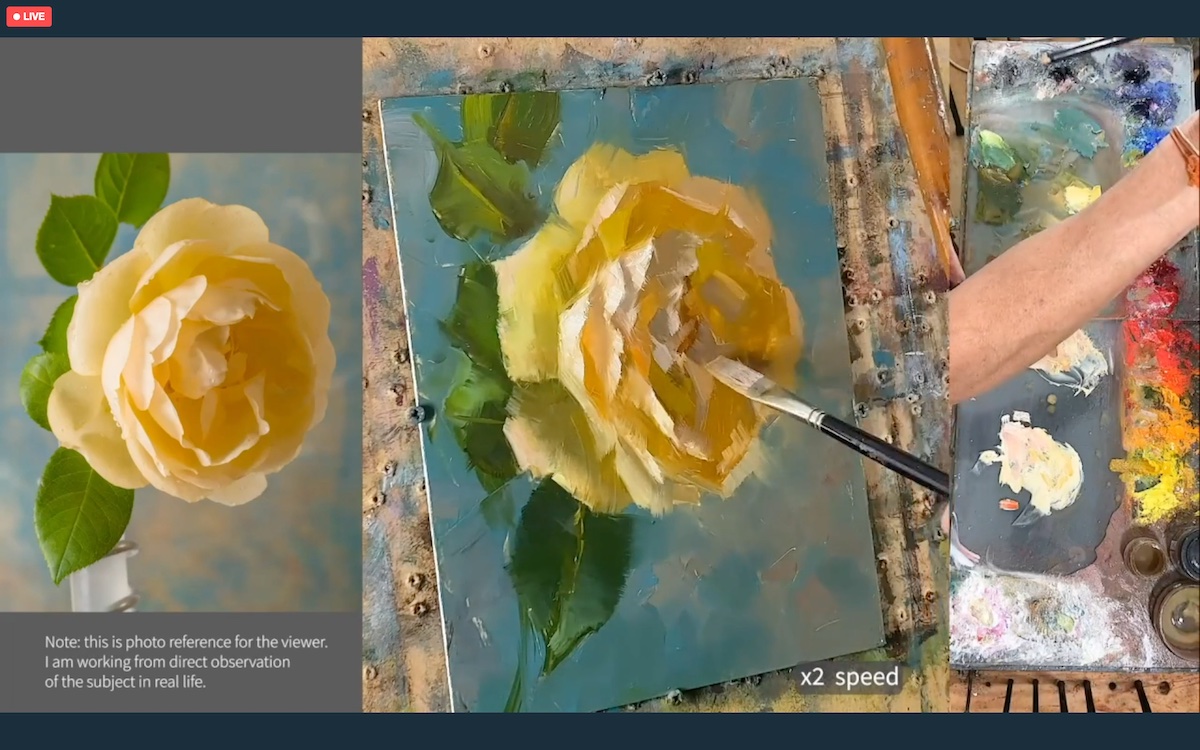
Instead, artist Alex Kelly did the floral demonstration at the premiere of a yellow Austin Rose. In executing the painting Kelly performed a block-in of the forms in which he later simplified tonal values, lights and shadows and finally darkened the background in order to bring out the rose in all its splendor. If in the early stages of the painting he worked with brush and palette knife on the finish he used a tool more appropriate to a culinary than an artistic setting. It is in the choice of this tool-a simple silicone kitchen spatula-that Kelly shows how creativity in art can serve its purpose. Indeed, the consistency of the spatula offered Kelly the opportunity to blur and cut the edges in an almost abstract manner yet perfectly in harmony with the realistic composition that perfectly rendered the sense of gravity of the rose petals in all their fragility.
In the making of the demo, Alex Kelly repeatedly reiterated his mantra, which consists of a few small tricks to take during the compositional process: squinting (to simplify values), knowing how to manage the relationships between values, chroma and hue, and taking three steps back from the painting so as to have an overall view of the composition.
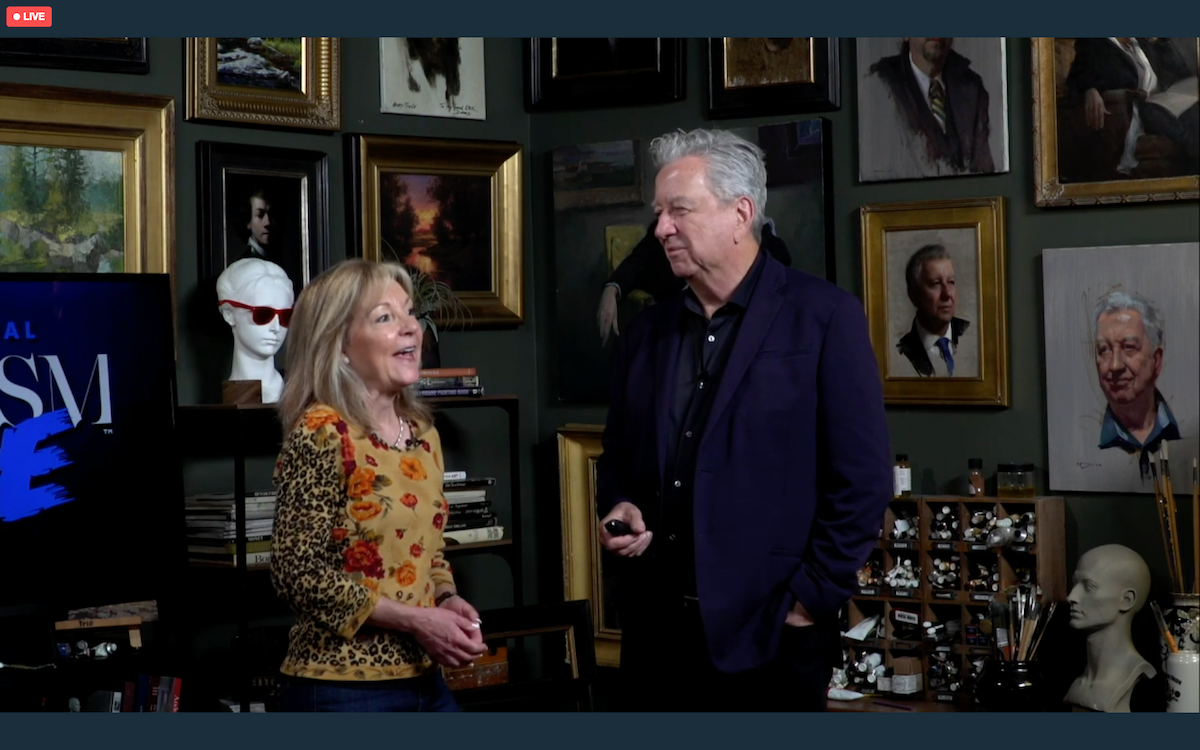
A personalissue made the long-awaited participation of Glenn Vilppu, an advocate of the mantra, “no rules just tools,” impossible. Vilppu has been able to transpose the canons of Renaissance drawing to the field of Disney and Marvel animation, receiving, in March of this year, the prestigious Amy Awards from the Hollywood animation film industry.
The day’s sponsors included demonstrations by the talented Kate Zambrano, who created a charcoal and watercolor work for Savoir-Faire, and Zhenya Gershman for Blick Art Materials, who showed how to create beautiful textures in her giant compositions.
Among the day’s welcome and appreciated guests was Nancy Atherton West, founder of Dreamlinerartist, the Facebook group inspired by, but not officially affiliated with, Streamline Art Videos and Eric Rhoads. You can join or just check out this growing Facebook group by typing in the following link: https://www.facebook.com/ events/1169818827302943/
The first day of Realism Live has come to an end, and Miami Niche looks forward to meeting more amazing artists tomorrow.
(on the title: Peter Trippi’s portrait by Michelle Dunaway)
